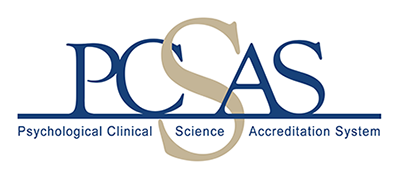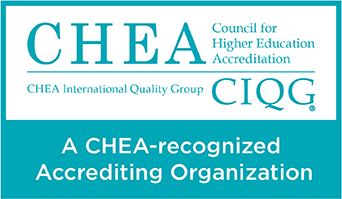By Shannon Savell, M.A., University of Virginia
For many, the experience of the transition to parenthood feels starkly different from traditional media portrayal or colloquially how it is described as a time of immense joy and purpose and deepened love between partners. This is why it may be shocking to some that despite being a highly anticipated milestone for many couples, previous research suggests that nearly 70% of couples experience a sharp decline in romantic satisfaction after the birth of the couple’s first child (Shapiro et al., 2000), potentially as a result of the psychological distress and strain on the couple’s relationship. There is strong evidence for a sudden and persistent decline in relationship functioning during the transition to parenthood (Doss et al., 2009; Mitnick et al., 2009). Specifically, for the average couple, Doss and colleagues (2009) found that along with declines in romantic relationship satisfaction, couples also experienced a stark decline in dedication to the relationship, an increase in the use of poor conflict management techniques, an increase in problem intensity, and a decrease in communication. Therefore, clinicians working with clients in the perinatal period must consider these findings in case conceptualization and treatment planning. The purpose of this article is to provide a brief overview of important research findings for the perinatal period, highlight a few intervention strategies, and briefly describe a pilot study of a preventative intervention developed to address the psychological stressors during the transition to parenthood for couples as both romantic partners and co-parents.
The trajectory of relationships following the birth of the first child is likely to have important implications for both the long-term health of the parents’ relationship and their children’s development (Schulz et al., 2006). For example, sustained dissatisfaction is a known predictor of relationship dissolution (i.e., divorce; Emery, 1982), and sustained perceived lack of support is a known precursor of post-partum depression (Schulz et al., 2006). Additionally, recent research provides support for a complex, dynamic relationship among parents’ romantic relationship satisfaction, their depressive symptoms, and their children’s disruptive externalizing problem behavior (Baker et al., 2020; Savell et al., under review). Interestingly, despite the common experience of a decline in romantic satisfaction and an increase in conflict, the average couple waits six years before seeking help for relationship problems (Gottman, 1994). Unsurprisingly, approximately 50% of all marriages that end do so in the first seven years, not too long after the transition to parenthood for many couples (Gottman, 1994).
Expectation management, proactive coping, and activating social support are just a few of the many intervention strategies that when tailored to the needs and context of the client may be particularly helpful for clinicians to lean on while working with clients in the perinatal period. Helping clients to develop flexible, balanced thinking regarding expectations about the transition to parenthood may be particularly useful. Normalizing and validating the concerns of the client and providing psychoeducation about the psychosocial stressors associated with the transition to parenthood will likely benefit clients in their expectation management. Further, clinicians should actively assess clients’ perceptions of their relationship quality and social support. It is especially important when working with clients in the perinatal period to consider the systems in which the client is situated. Clinicians could consider exploring ways to help the client foster sustained romantic relationship functioning during the peri- and post-partum stages, leaning on behavioral activation principles of planned, pleasurable activity scheduling. Clinicians could also consider helping their clients bolster their communication and problem-solving with their romantic partners as an active preparation for the added stressors during the postpartum period. Free resources on preparing psychologically for the transition to parenthood are available for expecting parents and clinicians on the Gottman Institute website as well as on Postpartum Support International.
In my dissertation project, my advisor and I developed a brief, five-session group-based preventative intervention for couples expecting their first child in which we incorporate third-wave CBT strategies and emotionally focused couples therapy techniques to help expecting parents develop flexible, balanced thinking for managing expectations about the transition to parenthood, build co-parenting skills through reflecting on their values together, develop strategies for maintaining emotional closeness in the romantic relationship, and practice distress tolerance and interpersonal effectiveness skills for managing conflict. In this pilot study, we found a less steep decline in romantic satisfaction from the third trimester of pregnancy to three months post-birth for those in the intervention as compared to the active control group. To our knowledge, this is also the first study of its kind to examine the influence of the intervention on a biological component of familial bonding in the form of oxytocin receptor gene methylation.
________________________________________________________________________
References
Baker, C. E., Brooks‐Gunn, J., & Gouskova, N. (2020). Reciprocal relations between maternal depression and child behavior problems in families served by Head Start. Child Development, 91(5), 1563-1576.
Doss, B. D., Rhoades, G. K., Stanley, S. M., & Markman, H. J. (2009). The effect of the transition to parenthood on relationship quality: an 8-year prospective study. Journal of Personality and Social Psychology, 96(3), 601.
Emery, R. E. (1982). Interparental conflict and the children of discord and divorce. Psychological Bulletin, 92(2), 310.
Gottman, J.M. (1994). What predicts divorce? Hillsdale, NJ: Lawrence Erlbaum.
Mitnick, D. M., Heyman, R. E., & Smith Slep, A. M. (2009). Changes in relationship satisfaction across the transition to parenthood: a meta-analysis. Journal of Family Psychology, 23(6), 848.
Schulz, M. S., Cowan, C. P., & Cowan, P. A. (2006). Promoting healthy beginnings: A randomized controlled trial of a preventive intervention to preserve marital quality during the transition to parenthood. Journal of Consulting and Clinical Psychology, 74(1), 20.
Shapiro, A. F., Gottman, J. M., & Carrere, S. (2000). The baby and the marriage: Identifying factors that buffer against decline in marital satisfaction after the first baby arrives. Journal of Family Psychology, 14(1), 59.
Disclaimer: The views and opinions expressed in this newsletter are those of the authors alone and do not necessarily reflect the official policy or position of the Psychological Clinical Science Accreditation System (PCSAS).


